9 Competitive Marketing Tactics To Entice Asian Consumers

Featured Image: Freepik
Asia as a region has been a thriving and evolving economy since 1967. The ongoing COVID-19 crisis has put a damper on the growth, but the regional growth predictions for the last quarter of 2020 and the first quarter of 2021, have been optimistic. Therefore, if you, as a business are trying to enter into the Asian market, this slowed-down economy is the best time to invest in critical research and explore some solid entry points into this market that will spell success for you.
In this run-down of marketing tactics, we will share 10 key solutions with you that have worked for other global companies who have tried to venture into this very-different-from-the-USA market.
1. Realize The Difference. Localize!
As Harvard Business Review’s Dae Ryun Chang puts it, your ‘Marketing 101 doesn’t work in Asia”. To reach your target Asian consumer, you’ll have to get into the trenches to figure out who you are dealing with. The Asia Pacific region is different from the USA in every way. It is more communal, social, and family-centered, with huge ethnic pride and sentimentalities, and multicultural and multilingual, too.
So, what works for an average buyer persona in New York will not work in Shanghai, Tokyo, or Seoul? What’s more, your marketing campaign needs to think ‘City’ or ‘Town’, not even ‘country’. The region is diverse and multifaceted.
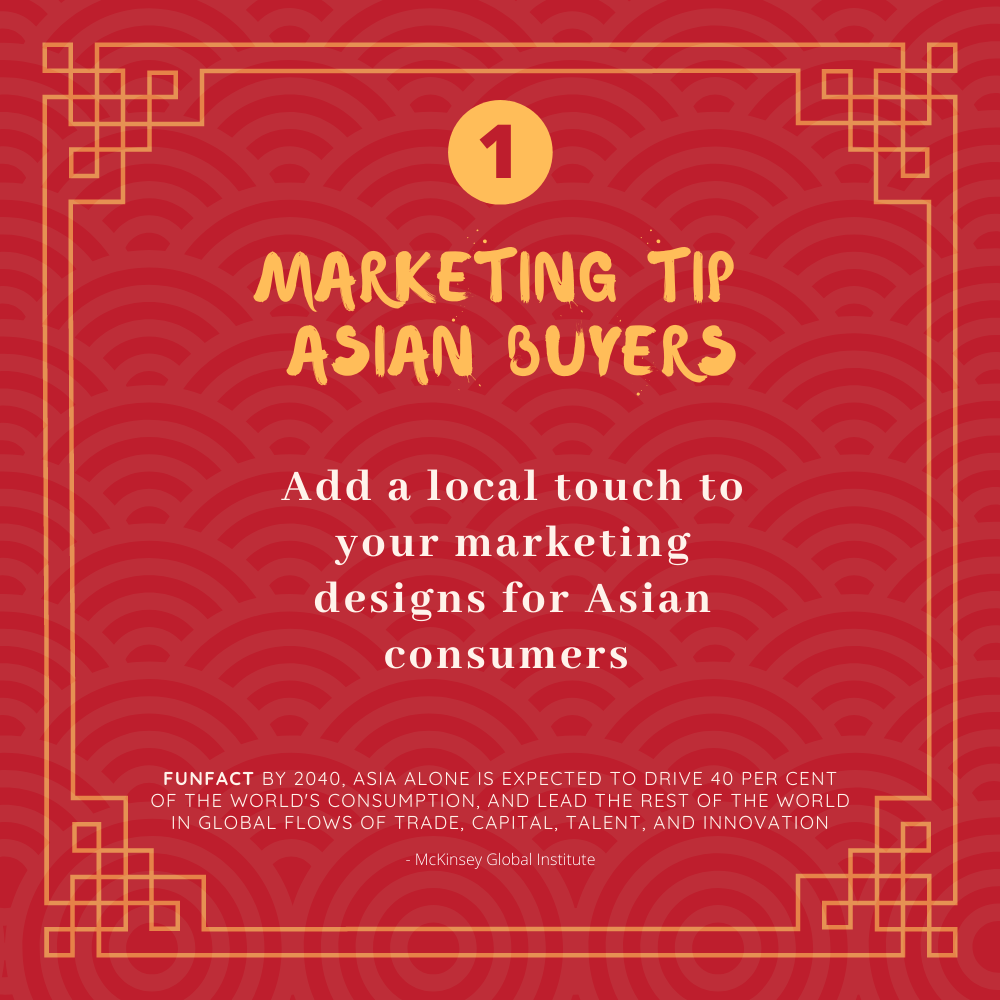
Therefore, when you design your marketing campaign, do so in a way that everything about it – language, offers, products, pricing, and payment method, etc. – is perfectly reflecting your understanding of the local market and culture.
Learn from LG. When the South Korean consumer electronics company first entered the Indian market, it soon realized that to establish itself as a dominating force, it needs to completely customize its product line to suit an average Indian buyer. Cue, refrigerators in brighter colors, large washing machines for large Indian families, TVs with better speakers as Indian loves to listen to music on their TVs, and so much more.
2. Be Mobile-First And Focus On Android
China ranks as the top country in the world in terms of the highest Smartphone users worldwide. India trails at a second, and U.S is at the third. Use this knowledge to launch your business in the Asian market with a mobile-first approach. SEO practices in China, Japan, Thailand, and other Asian countries also encourage this trend. As Motoko Hunt reports, consumer behaviors in Asia are more mobile-friendly as they stay on their phones during a large part of the purchase process and consider their devices as full-scale communication machines.
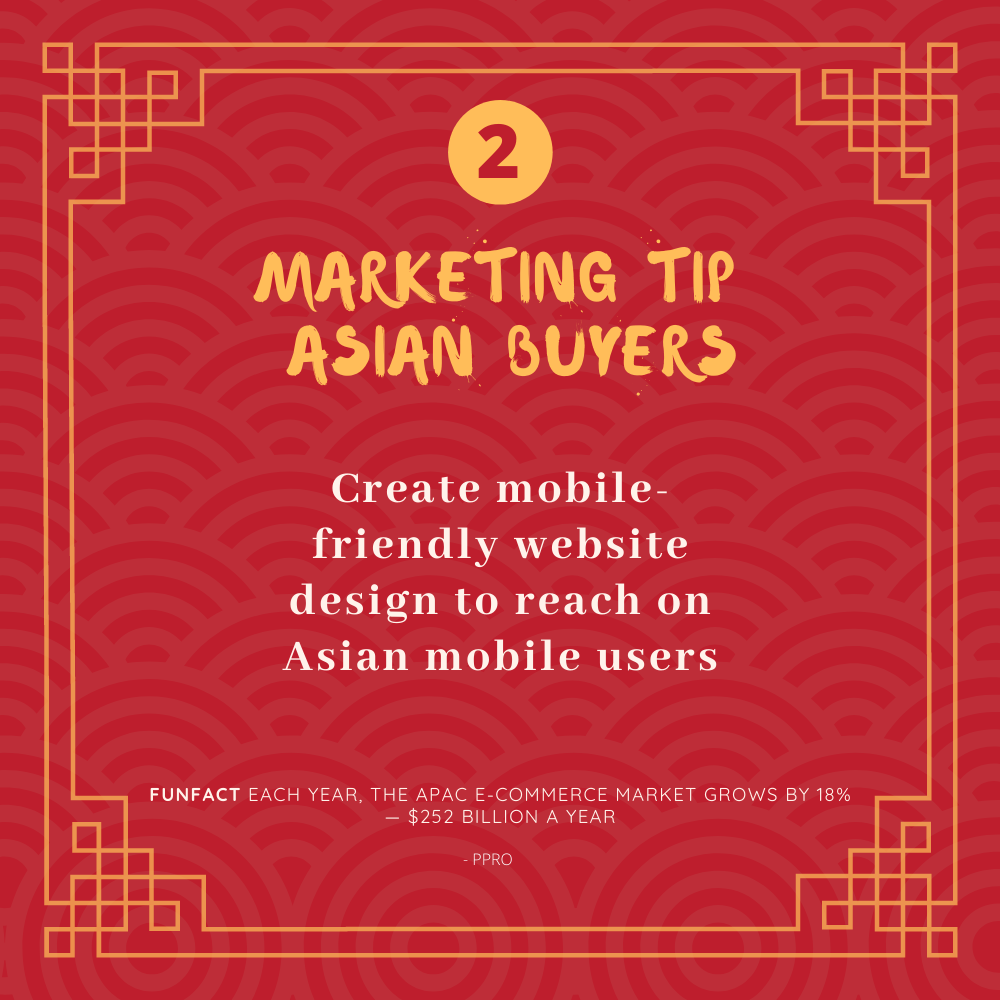
In addition to being mobile-first, you also need to focus on Android. The three Smartphone manufacturer giants in Asia – Huawei, Oppo, and Xiaomi, are all on Android. Apple has not been able to gain footing in the Asian market as the average Asian consumer is financially conservative and looks more at affordable options instead of associating with big brands, according to a consumer insight research by the Nanyang Technological University, Singapore. They have been discovered as probably the most brand disloyal consumers ever. So, to reach them, your app must be android friendly and not very heavy so even consumers with low-level data plans can access your service easily.
3. Advertise On Local Social Networks
As a marketer, you must be aware that your regular social media networks will not work to their fullest potential in the Asian markets. For one thing, China, the biggest consumer market in Asia has banned Facebook, YouTube, and Twitter, Instagram, and Snapchat, etc. – for another, Asian markets have their own local and thriving social media platforms like WeChat in China and Line in Japan.
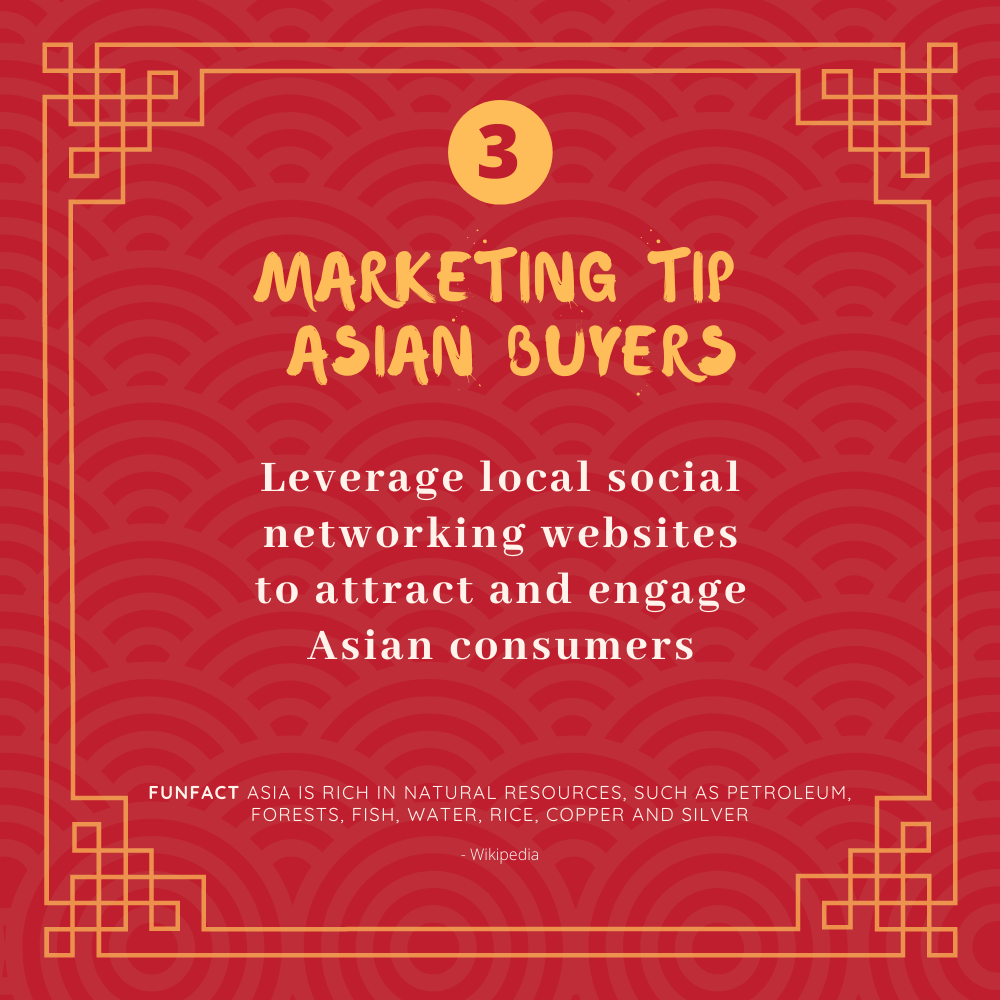
Additionally, Chinese consumers also use a host of other social networks/messaging apps like Sina Weibo, and more for their everyday communication. In South Korea, the local search engine Naver reigns supreme. It is a Q&A-based search engine where people ask any question they have in mind, and others, expert in the knowledge answer the question in minute detail – free of charge. It is the spirit of helping each other that drives the growth and popularity of Naver – a company that has beat Google in the search engine battle in South Korea. How did it do that? By creating Korean-language text. As Wayne Lee, a Woori Investment and Securities Analyst, confides to New York Times’ Choe Sang-Hun, “No matter how powerful Google’s search engine may be, it doesn’t have enough Korean-language data to trawl to satisfy South Korean customers.”
So, to reach your targeted Asian consumer, you need to study the local social networks and come up with a plan to advertise your products/services according to what works there.
4. Influencer Marketing
When asked about which methods of marketing work best in Asian markets, Masahiro Honda, a marketing expert in Japan, answers with an emphatic “influencer marketing”.
As we have already explained, Asian consumers are not into following big brands or believing everything they have to say. They rather follow a real human that they trust for honest reviews and feedback and transparent brand relationships. A poll in Vietnam showed that 60% of teenagers would follow the fashion style of their favorite artists, while 50% admitted to being influenced by their lifestyle.

Therefore, influencer marketing is probably the most potent tool in your arsenal as you devise marketing tactics to entice Asian consumers. To employ the best influencers for your marketing campaign, look at individuals who share strong connections with their followers as Asian consumers follow a communal mindset, and collective opinions matter more than individual mindsets. Therefore, you’d be better off with an influencer who shares a strong social standing among the majority of their followers, rather than a small section of fiercely loyal fans.
5. Short-form Video Marketing
Videos have proven to be a successful form of marketing. Videos on social media are shared 1200 times more than any other kind of content. While an average marketing video on social media is about 2 minutes long (or less), TikTok has challenged these norms.
On TikTok, a video cannot be longer than 60 seconds or shorter than one second. This poses challenges for marketers who are used to making videos longer than 2 minutes. But when you are aiming to target Asian customers, you have to remember that TikTok is hugely popular with the Asian youth. They use the platform not only to express themselves, but also make purchase decisions as a whole slew of local and foreign brands have made their accounts on the famous video app and are using it to penetrate sections of the Asian market that they hadn’t tapped before.

So, dust off your video marketing knowledge and start thinking short-form when working on your next marketing video for the Asian buyer.
6. Multilingual Online Presence
As we said, the Asian market is diverse and multifaceted. In China, there are different dialects, accents, and linguistic differences that make the country difficult to penetrate with a single, unified language approach.
The same is true for almost every other country in the Asia Pacific region. Therefore, your marketing approach needs to be multilingual – both in terms of written and oral language. As a standard practice, almost every website in China offers three language options: traditional Chinese, simplified Chinese, and English. Make sure you are following this practice when you launch your website.
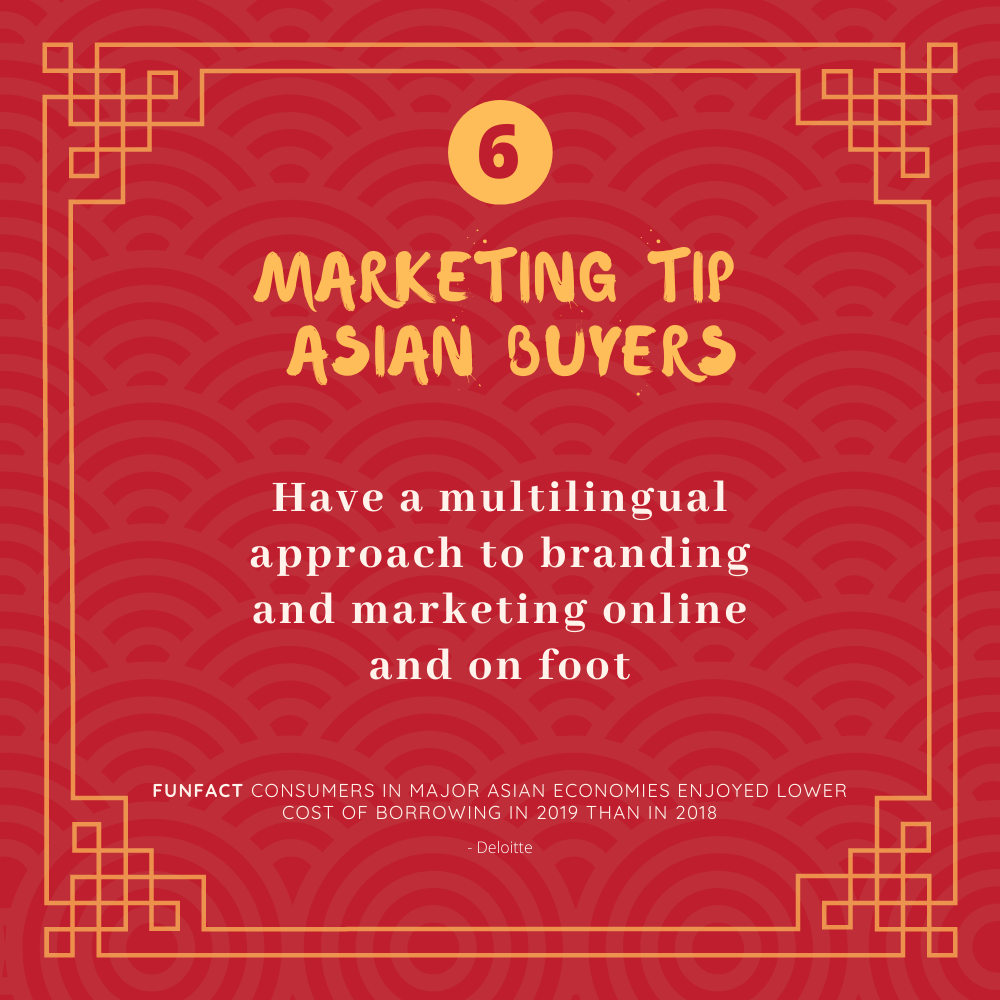
Your online ads, online videos, print ads, and every other form of marketing and communication with your audience need to have a multilingual approach to penetrate further into the market. It will not only attract more Asian consumers but will enable you to gain their trust more easily and help you stand apart from your competition.
7. Varied Payment Methods
The Chinese economy is the largest eCommerce market in the world, and a whole lot of them do not use credit or debit cards for their online purchases. So, unless you are offering them the payment methods they are most comfortable with, most consumers will choose to buy from elsewhere. Remember what we told you about Asian consumers not being brand loyal.
Therefore, offer them ease, convenience, and value. Payment methods that Chinese consumers prefer are AliPay, WeChat, and UnionPay. You can also offer Cash-on-Delivery solutions – a rather popular payment option in Southeast Asian countries. In Japan, though credit cards are in mainstream use, customers also want the option to pay via JCB or head over to a Konbini store to buy the items they need.
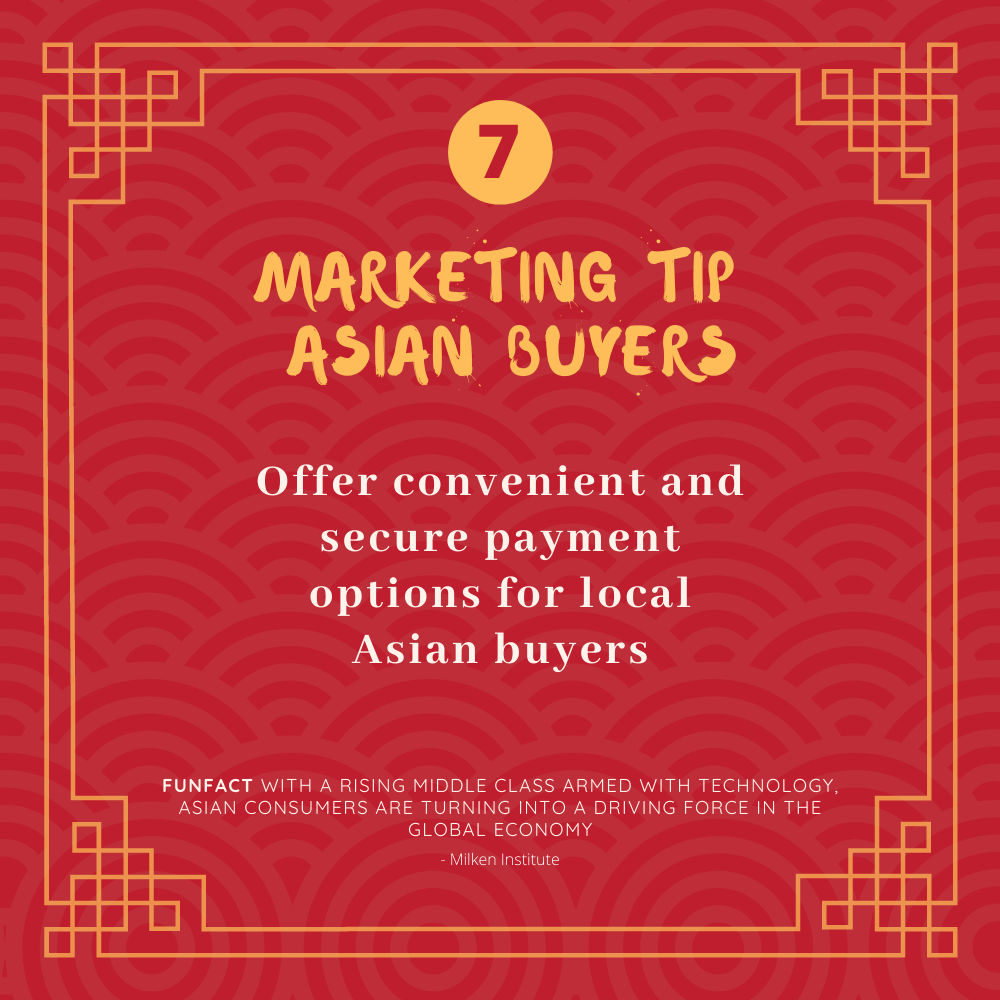
Other developing and emerging economies in the APAC region, like Malaysia, Indonesia, Thailand, Singapore, and South Korea, etc. also use credit and debit cards but want more varied options like online wallets or COD convenience.
8. Themes Of Connectivity
An important thing to note is, and something that you should always keep in mind when working with Asian clients, their culture is more about community and collectivism. In such a culture, themes of shared human connections, acceptance, family, and community are considered vastly superior to a lone individual’s thought.
This distinction between Asian and Western cultures was further explained by René Chen, a key speaker at the Cannes Lions in 2016. Basically what she said was that people in China are usually more accepting of circumstances. “If it rains, we just accept it. The Westerns will ask a fundamental question like why does it rain?” This stark difference between accepting versus challenging is something that drives a large part of Asian consumer psyche.

So, when designing a strategy to entice Asian consumers, make your ad or script or message directed towards communal connections, acceptance of ancient wisdom, and beauty of social relationships.
An ad for one of Thailand’s major insurance companies, Thai Life Insurance, that went viral a few years ago featured random acts of kindness a stranger does for other strangers, with no expectation of any returns. Similarly, if you take a look at some of the most viral Indian ads of recent years, almost all of them capture one or another side of family, community, and shared experiences.
So, focus on themes of interconnectedness when designing marketing content for your Asian consumers.
9. Customer Services Chatbots
Asian consumers are more readily accepting of technology than their Western counterparts. So while an average customer in LA may not want to talk to a customer service chatbot, for Asians, it is a regular part of their online experience.
OCBC Bank of Singapore launched an AI-powered chatbot, Emma, in 2013 which was designed and developed to provide home loan advice and expertise to potential clients. Since its launch, Emma has helped the bank gain huge ground in the local market and pushed its competitors to launch similar customer service bots to meet the rising consumer demand.
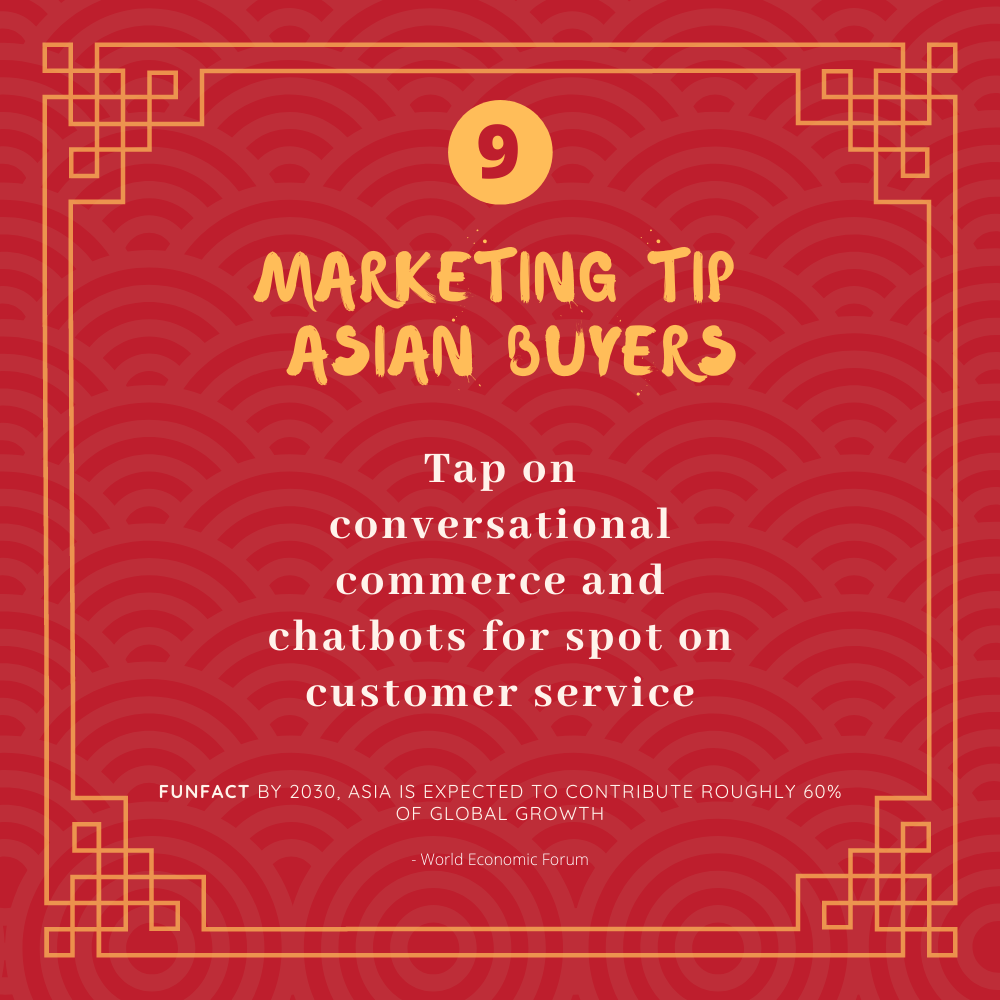
Since a huge part of marketing is about reliable customer service, you will also do well to invest in customer service chatbots for your website and other digital media. Rapidly developing AI has ensured that these chatbot customer service agents offer insightful help to the consumers. This not only retains potential customers but also increases the return of the repeat ones.
In The End…
Ultimately, it all comes down to unlearning what you have known about marketing so far as a Western professional and relearning it all to get a sense of what your average Asian consumer is looking for. To understand their buying habits, spending habits, consumer behaviors, and other factors that may influence the marketing strategies you have to look at the trees, not the forest. Putting data on a template is not going to work with these consumers. You have to write a whole new handbook. Invest in a local R&D team as well as setting up regional offices so your official representatives are other locals that Asian consumers trust more than some foreign people who are trying to enter their homes and markets.
Marketing Firm Logos
Communication Company Logos
Media Outlet Logos
Advertising Agency Logos
PR Firm Logos
Blog Logos


